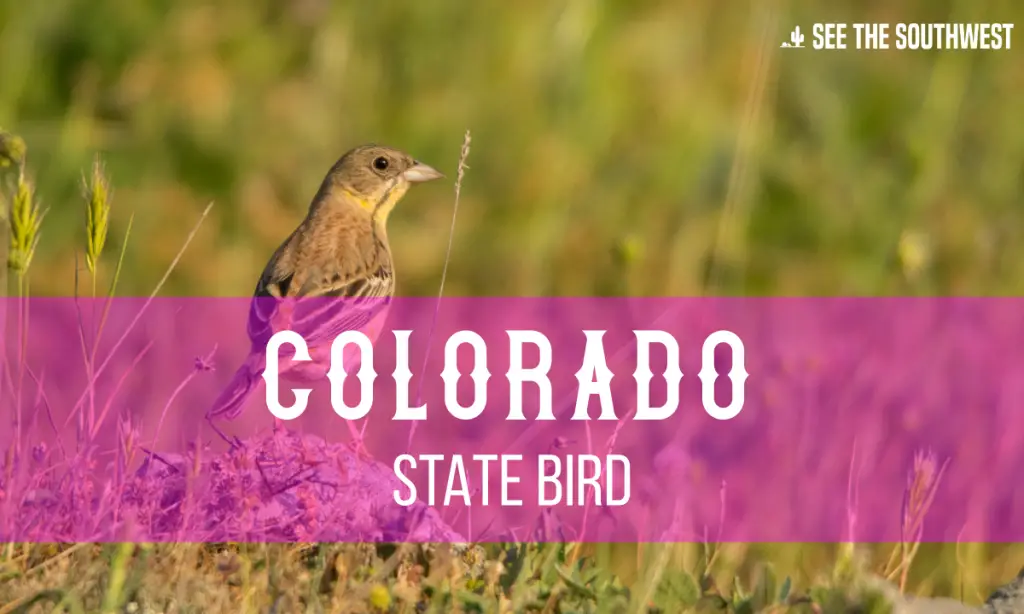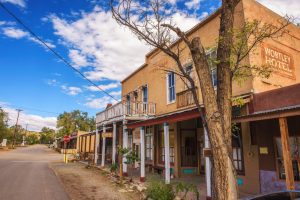
Adopted as the official state bird of Colorado on April 29, 1931, the Lark Bunting is actually a migratory bird. Flocks arrive in April and inhabit the plains regions and areas up to 8,000 feet in elevation, then fly south again in September to the north and central Mexico. The Lark Bunting lives in meadows, prairies and sagebrush during the summer month and in the winter they love cultivated lands, brushy and desert areas. To view and watch the Lark Bunting a good pair of Binoculars is recommended.
The male bird is best known for its spectacular courtship flight, warbling and trilling a distinctive mating song. Since there are few elevations in their chosen territories, they will fly almost vertically during the mating flight and then drop back to their original location. Black with snowy white wing patches and edgings, tail coverts and outer tail feathers, the male bird changes color to gray brown during the winter months, however the chin remains black and the black belly feathers retain white edgings. The female bird is gray brown above and white below with dusky streaks. The male bird is 6 to 7″, the female is slightly smaller.
The female Lark Bunting typically chooses a nesting site under a shrub, where she scrapes out a depression in the ground and lines it with grass, roots and stems. The clutch normally contains 3 to 6 eggs and the incubation period lasts 10 or 11 days. Both parents attend the nest and incubate the eggs. The male occasionally brings food to the female.
The Lark Bunting feeds mostly on the ground, but catches some of its food in flight. It feeds on insects such as grasshoppers, ants, beetles, bugs and seeds of wild plants, grains and plant matter.
Though the lark bunting is still a common sparrow of the Great Plains, grassland bird species in North America have experienced large population declines in the past forty years. Lark buntings declined by 2.5% per year in Colorado between 1966 and 2003.
The lark bunting was chosen as the state bird of Colorado because of its distinct plumage and it was thought their nature fit in with the spirit of Colorado.




